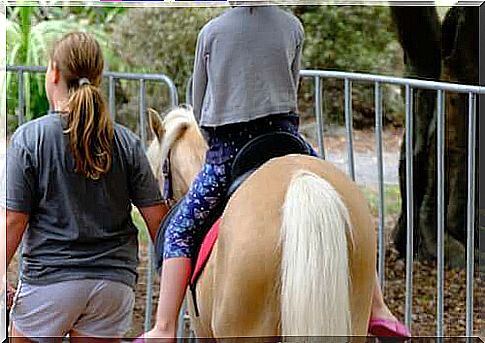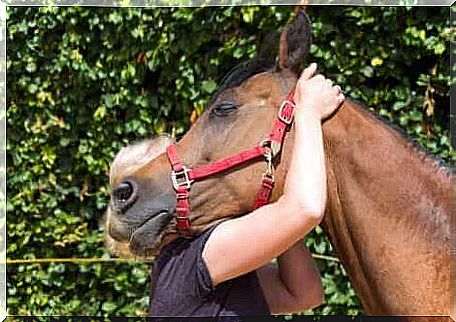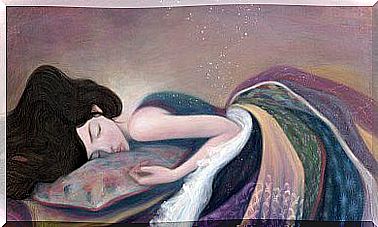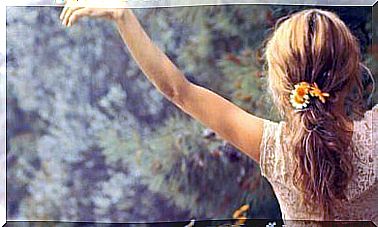Equitherapy: Benefits, Applications And Disciplines

More and more people with a certain disorder or disability are opting for alternative therapies to improve their quality of life, such as horse therapy. This is not to say that this type of therapy did not exist many years ago. But now it is given more importance.
Thanks to alternative therapies, a person has many very different tools to get to know himself and improve his personal development as well as his quality of life. As far as equitherapy is concerned, the horse represents the main working tool.
Many benefits of equine therapy have been reported in people with autism, cerebral palsy, and other types of disorders. How did this practice come about? What groups is it aimed at? What disciplines does it include? We tell you everything here!

What is equitherapy?
Equitherapy, also called “horse therapy”, is a type of therapy where the primary tool isAll items on the horse. It is frequently offered as an alternative therapy frequently for people with some type of disability or neurodevelopmental disorder (eg, autism).
The goal of equitherapy is to promote the cognitive, physical, emotional, social and / or professional development of the patient through a series of exercises, games and activities involving horses. More generally, through this therapy, the objective is to improve the quality of life and the well-being of the patient.
The patient can ride the horse, comb it, take care of it, stroke it, feed it, perform different types of exercises, etc. As with any therapy, the treatment is personalized according to the physical and psychological characteristics of the patient, so that the latter can get the most out of this interaction with the animal.
The origin of this therapy
The Greeks already advised to ride a horse to prevent and treat various ailments of the body and mind. More formally, it is said that equitherapy was born in Mexico, in 1969, thanks to a physical trainer from the Mexican Olympic Sports Center, Rogelio Hernández Huerta.
That same year, the first specialized equitherapy center was created. The association NARHA (North American Riding for the Handicapped Association) also appeared, whose mission is to coordinate and officially recognize this therapy.
Who is she talking to ?
Equitherapy is particularly aimed at people with a certain handicap, whether physical or mental. It is used in children and adults. More specifically, equine therapy particularly benefits people who present:
- a physical, mental or sensory handicap.
- a neurodevelopmental disorder (for example, autism).
- or a problem of marginalization or social maladjustment.
This discipline is particularly beneficial for patients with autism, cerebral palsy, Rett syndrome, damage to the spine and / or brain, multiple sclerosis, fibromyalgia, etc. The discipline must be adapted to the case; the objectives to be worked on will also be diverse.
The benefits of equitherapy
The benefits of equitherapy have been supported by different studies. It brings both psychological and physical benefits. Regarding the psychological (and emotional) benefits, this therapy:
- Improves self-esteem.
- Promotes the control of emotions.
- Builds self-confidence.
- Stimulates memory and attention.
- Promotes respect for nature and animals.
Regarding the physical benefits, improvements have been observed in children practicing equine therapy. These improvements relate to muscle development, balance, strength, muscle tone, motor skills, coordination and endurance, among others.
Equitherapy and autism
As discussed earlier, equine therapy is frequently applied in children with autism due to its many benefits. For example, the study by Pérez et al. (2008) showed that through the horse, the child can receive stimulation of four types : vestibular, proprioceptive, tactile and motor.
In addition, another study (2017) has shown that the transmission of body heat from the horse, its three-dimensional movements and the vibrations it transmits, provide the child with stimulation of nerve structures. This promotes the development of the child.
Yet another study by Delgado and Sánchez (2015) and published in Mediciego claims that children with autism can connect emotionally with the horse. In addition, riding them gives them a sense of security that would benefit their self-esteem.

The different disciplines
Within equine therapy, there are different disciplines. Some of the best known are:
- The therapeutic shoot. This discipline consists of doing exercises on the horse’s back. These performances improve the patient’s balance and coordination.
- Educational horseback riding. It is a very widespread discipline. It consists in the adaptation of the patient to the horse and to its entire environment. The benefits are as follows: it stimulates motivation, affectivity and improves concentration, among others.
- Hippotherapy. This discipline consists of performing physiotherapeutic exercises with and on the horse. The idea is that the horse transmits its body heat, rhythmic impulses and three-dimensional movement (that is, working with the movement of the horse).
- Adapted riding. This discipline concerns people who already practice horse riding.
In short, equine therapy is a therapeutic tool with undeniable benefits. It can be used as an alternative therapy in children with autism and other conditions or disorders.
This therapy is also indicated for adults, because the variety of disciplines it encompasses allows to work with all types of people and in very diverse fields. Of course, a qualified and duly accredited professional must always accompany the patient (these are usually specialized physiotherapists).









